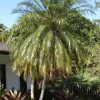 The pygmy date palm is one of the most popular small landscape palms in Florida. It is single-stemmed, but is often grown in clumps of 2–4 closely spaced individuals which, when older, give the impression of a multi-stemmed palm. This 4-page fact sheet was written by Timothy K. Broschat, and published by the UF Department of Environmental Horticulture, August 2014.
The pygmy date palm is one of the most popular small landscape palms in Florida. It is single-stemmed, but is often grown in clumps of 2–4 closely spaced individuals which, when older, give the impression of a multi-stemmed palm. This 4-page fact sheet was written by Timothy K. Broschat, and published by the UF Department of Environmental Horticulture, August 2014.
http://edis.ifas.ufl.edu/st441
Category: Lawn & Garden
Purple Sunset Pomegranate (Punica granatum ‘PIIPG-1’)
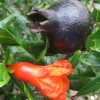 Purple Sunset is a new ornamental cultivar of pomegranate, Punica granatum. Purple Sunset pomegranate is distinguished from fruiting pomegranate by a bushy, compact habit and numerous flowers followed by small, ornamental, purple-black fruit. This 2-page fact sheet was written by Gary W. Knox, and published by the UF Department of Environmental Horticulture, June 2014.
Purple Sunset is a new ornamental cultivar of pomegranate, Punica granatum. Purple Sunset pomegranate is distinguished from fruiting pomegranate by a bushy, compact habit and numerous flowers followed by small, ornamental, purple-black fruit. This 2-page fact sheet was written by Gary W. Knox, and published by the UF Department of Environmental Horticulture, June 2014.
http://edis.ifas.ufl.edu/ep501
Mexican Sycamore (Platanus mexicana)
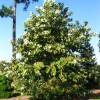 Mexican sycamore (Platanus Mexicana) is a fast growing, drought tolerant tree boasting smooth white and tan bark and large, maple-like leaves with velvety, silver undersides. Native to northeastern and central Mexico, this tree’s cold hardiness is not well defined. However, Mexican sycamore grows well as far north as USDA Cold Hardiness Zone 8b in Texas and Florida. This 2-page fact sheet was written by Gary W. Knox, and published by the UF Department of Environmental Horticulture, June 2014.
Mexican sycamore (Platanus Mexicana) is a fast growing, drought tolerant tree boasting smooth white and tan bark and large, maple-like leaves with velvety, silver undersides. Native to northeastern and central Mexico, this tree’s cold hardiness is not well defined. However, Mexican sycamore grows well as far north as USDA Cold Hardiness Zone 8b in Texas and Florida. This 2-page fact sheet was written by Gary W. Knox, and published by the UF Department of Environmental Horticulture, June 2014.
http://edis.ifas.ufl.edu/ep502
Demonstration Gardens in the University of Florida Cooperative Extension Service
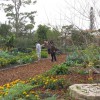 UF/IFAS Extension supports a network of demonstration gardens throughout the state. These gardens showcase plants and practices appropriate for their locations and are open to the community free of charge. Learning opportunities abound for home gardeners and landscape professionals on design, planting, and maintenance procedures. The gardens typically have interpretative materials available, including signs, brochures, and self-guided tours. Many are sites for gardening festivals, workshops, and plant sales. This 27-page directory was written by Sydney Park Brown, Kim Taylor, and Emily Eubanks, and published by the UF Department of Environmental Horticulture, March 2014.
UF/IFAS Extension supports a network of demonstration gardens throughout the state. These gardens showcase plants and practices appropriate for their locations and are open to the community free of charge. Learning opportunities abound for home gardeners and landscape professionals on design, planting, and maintenance procedures. The gardens typically have interpretative materials available, including signs, brochures, and self-guided tours. Many are sites for gardening festivals, workshops, and plant sales. This 27-page directory was written by Sydney Park Brown, Kim Taylor, and Emily Eubanks, and published by the UF Department of Environmental Horticulture, March 2014.
http://edis.ifas.ufl.edu/ep108
Incorporating Woody Ornamentals into Residential Landscapes to Reduce Nutrient Leaching
 Urban landscapes in Florida are typically dominated by turfgrass monoculture, with ornamental landscape plants comprising only a small portion of the landscape. Incorporating more woody ornamentals into your landscape can reduce fertilization and irrigation demand and help reduce nutrient leaching losses from your yard—a combination that will help protect Florida’s water resources. This 3-page fact sheet was written by Drew C. McLean, Andrew K. Koeser, Amy L Shober, Zhixuan Qin, Gitta Hasing, and Richard C. Beeson, and published by the UF Department of Environmental Horticulture, July 2014.
Urban landscapes in Florida are typically dominated by turfgrass monoculture, with ornamental landscape plants comprising only a small portion of the landscape. Incorporating more woody ornamentals into your landscape can reduce fertilization and irrigation demand and help reduce nutrient leaching losses from your yard—a combination that will help protect Florida’s water resources. This 3-page fact sheet was written by Drew C. McLean, Andrew K. Koeser, Amy L Shober, Zhixuan Qin, Gitta Hasing, and Richard C. Beeson, and published by the UF Department of Environmental Horticulture, July 2014.
http://edis.ifas.ufl.edu/ep503
Smooth-bark Mexican Pine (Pinus pseudostrobus)
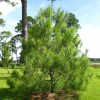 This beautiful pine is distinguished by long, pendulous needles that form a graceful, open evergreen conifer. The slender needles are up to 12 inches long in groups (fascicles) of five. In its native environment, smooth-bark Mexican pine is considered fast growing, and can reach more than 120 feet tall and about 60 feet wide. In southern Georgia, trees have reached heights of 32 feet and widths of 25 feet in 10 years. Trees have a pyramidal form when young, becoming flat-topped with age. In its native range, smooth-bark Mexican pine grows in temperate to warm temperate areas with predominately summer rainfall. Florida’s similar climatic conditions suggest that smooth-bark Mexican pine will adapt well throughout the state. Cold hardiness is not well-defined, but this species has grown well in southern Georgia (USDA Cold Hardiness Zone 8b). This 2-page fact sheet was written by Gary W. Knox, and published by the UF Department of Environmental Horticulture, June 2014.
This beautiful pine is distinguished by long, pendulous needles that form a graceful, open evergreen conifer. The slender needles are up to 12 inches long in groups (fascicles) of five. In its native environment, smooth-bark Mexican pine is considered fast growing, and can reach more than 120 feet tall and about 60 feet wide. In southern Georgia, trees have reached heights of 32 feet and widths of 25 feet in 10 years. Trees have a pyramidal form when young, becoming flat-topped with age. In its native range, smooth-bark Mexican pine grows in temperate to warm temperate areas with predominately summer rainfall. Florida’s similar climatic conditions suggest that smooth-bark Mexican pine will adapt well throughout the state. Cold hardiness is not well-defined, but this species has grown well in southern Georgia (USDA Cold Hardiness Zone 8b). This 2-page fact sheet was written by Gary W. Knox, and published by the UF Department of Environmental Horticulture, June 2014.
http://edis.ifas.ufl.edu/ep500
Natural Products for Managing Landscape and Garden Pests in Florida
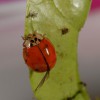 This publication describes “natural” pesticides: alternatives that are usually less toxic to non-target organisms and the environment and that, when used correctly, can be effective substitutes for synthetic products. In this publication, natural substances used for pest management in landscapes and gardens are grouped into oils, plant extracts, insecticidal soaps, mineral insecticides, microbial insecticides, and products that control diseases. Certain products contain combinations of these groups (e.g., soap and oil). This 8-page fact sheet was written by Eileen A. Buss and Sydney G. Park Brown, and published by the UF Department of Entomology and Nematology, April 2014.
This publication describes “natural” pesticides: alternatives that are usually less toxic to non-target organisms and the environment and that, when used correctly, can be effective substitutes for synthetic products. In this publication, natural substances used for pest management in landscapes and gardens are grouped into oils, plant extracts, insecticidal soaps, mineral insecticides, microbial insecticides, and products that control diseases. Certain products contain combinations of these groups (e.g., soap and oil). This 8-page fact sheet was written by Eileen A. Buss and Sydney G. Park Brown, and published by the UF Department of Entomology and Nematology, April 2014.
http://edis.ifas.ufl.edu/in197
Socio-Demographic Characteristics and Concerns about Water Quality Issues of Master Gardener Program Volunteers
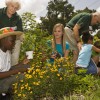 To respond to residents’ informational needs, the Cooperative Extension Service offers a variety of volunteer training and certification programs. Who participates in such programs? What types of audiences are being reached? Do such programs increase knowledge and change behavior of the volunteers? In this article, we attempt to answer these questions by summarizing existing studies and using responses to a regional public survey, and by focusing on the Master Gardener program and surface water quality issues as examples. This 7-page fact sheet was written by Tatiana Borisova, Michael Smolen, Maria Pilar Useche, Jon Calabria, Nickola Sochacka, Damian Adams, Diane Boellstorff, Jason Evans, and Robert Mahler, and published by the UF Department of Food and Resource Economics, May 2014.
To respond to residents’ informational needs, the Cooperative Extension Service offers a variety of volunteer training and certification programs. Who participates in such programs? What types of audiences are being reached? Do such programs increase knowledge and change behavior of the volunteers? In this article, we attempt to answer these questions by summarizing existing studies and using responses to a regional public survey, and by focusing on the Master Gardener program and surface water quality issues as examples. This 7-page fact sheet was written by Tatiana Borisova, Michael Smolen, Maria Pilar Useche, Jon Calabria, Nickola Sochacka, Damian Adams, Diane Boellstorff, Jason Evans, and Robert Mahler, and published by the UF Department of Food and Resource Economics, May 2014.
http://edis.ifas.ufl.edu/fe942
Mole Cricket IPM Guide for Florida
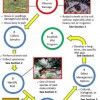 Mole crickets can become serious pests of turfgrasses, pastures, and vegetable seedlings. The first step in determining if you have a mole cricket problem at a site is to compare the existing damage to pictures of known mole cricket damage. If the damage is likely caused by mole crickets, specimens should be obtained and the pest identified. You then should determine if the number of mole crickets is great enough to cause an unacceptable level of damage and decide what control measures should be used. Eventually, a long-term, sustainable integrated pest management (IPM) program should be established. This 20-page guide will help you identify mole cricket infestations and manage them effectively and economically while minimizing environmental impacts. Written by C. R. Kerr, N. C. Leppla, E. A. Buss, and J. H. Frank, and published by the UF Department of Entomology and Nematology, May 2014.
Mole crickets can become serious pests of turfgrasses, pastures, and vegetable seedlings. The first step in determining if you have a mole cricket problem at a site is to compare the existing damage to pictures of known mole cricket damage. If the damage is likely caused by mole crickets, specimens should be obtained and the pest identified. You then should determine if the number of mole crickets is great enough to cause an unacceptable level of damage and decide what control measures should be used. Eventually, a long-term, sustainable integrated pest management (IPM) program should be established. This 20-page guide will help you identify mole cricket infestations and manage them effectively and economically while minimizing environmental impacts. Written by C. R. Kerr, N. C. Leppla, E. A. Buss, and J. H. Frank, and published by the UF Department of Entomology and Nematology, May 2014.
http://edis.ifas.ufl.edu/in1021
Heirloom Hot Pepper Varieties for Florida
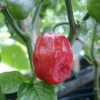 Here is a guide of the popular pepper varieties used in Florida. The popularity was assessed from a survey among seed suppliers, which include Baker Creek Heirloom Seeds, Burpee, High Mowing Seeds, Southern Exposure Seed Exchange, Tomato Grower Supply Company, Seeds of Change, Territorial Seed Company, and My Patriot Supply. When organic seeds were available, the USDA logo was inserted. The relative Scoville rating, which measures a pepper’s pungency, was also included when it was available. This 15-page fact sheet was written by Monica Ozores-Hampton, and published by the UF Department of Horticultural Sciences, November 2014.
Here is a guide of the popular pepper varieties used in Florida. The popularity was assessed from a survey among seed suppliers, which include Baker Creek Heirloom Seeds, Burpee, High Mowing Seeds, Southern Exposure Seed Exchange, Tomato Grower Supply Company, Seeds of Change, Territorial Seed Company, and My Patriot Supply. When organic seeds were available, the USDA logo was inserted. The relative Scoville rating, which measures a pepper’s pungency, was also included when it was available. This 15-page fact sheet was written by Monica Ozores-Hampton, and published by the UF Department of Horticultural Sciences, November 2014.
http://edis.ifas.ufl.edu/hs1244
Florida Foliage House Plant Care: Adenium swazicum
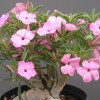 Adenium swazicum is a species of desert rose whose gray-green leaves appear folded and are velvety to touch. It is sought after by collectors for its graceful, weeping branches and delicate flowers that occur in various shades of pink. It is a smaller plant with weaker branches and stems compared to other Adenium species such as Adenium obesum or Adenium arabicum. This 2-page fact sheet was written by R.J. Henny and J. Chen, and published by the UF Department of Environmental Horticulture, April 2014.
Adenium swazicum is a species of desert rose whose gray-green leaves appear folded and are velvety to touch. It is sought after by collectors for its graceful, weeping branches and delicate flowers that occur in various shades of pink. It is a smaller plant with weaker branches and stems compared to other Adenium species such as Adenium obesum or Adenium arabicum. This 2-page fact sheet was written by R.J. Henny and J. Chen, and published by the UF Department of Environmental Horticulture, April 2014.
http://edis.ifas.ufl.edu/ep499
American Lotus, Yellow Lotus: Nelumbo lutea
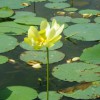 American lotus is an ideal native plant for constructed or restored wetland areas, where it provides shelter, habitat, and food for wildlife. It is an herbaceous aquatic perennial native plant that tolerates a wide range of conditions. The fragrant yellow flowers, huge round leaves, and persistent seed pods borne on stiff stalks high above the water make it both distinctive and visually striking. Native American tribes treated the American lotus as a sacred plant with mystical powers, and many tribes ate the large rhizomes and used parts of the plant for medicinal purposes. This 3-page fact sheet was written by Warner Orozco-Obando and Lyn Gettys, and published by the UF Department of Agronomy, March 2014.
American lotus is an ideal native plant for constructed or restored wetland areas, where it provides shelter, habitat, and food for wildlife. It is an herbaceous aquatic perennial native plant that tolerates a wide range of conditions. The fragrant yellow flowers, huge round leaves, and persistent seed pods borne on stiff stalks high above the water make it both distinctive and visually striking. Native American tribes treated the American lotus as a sacred plant with mystical powers, and many tribes ate the large rhizomes and used parts of the plant for medicinal purposes. This 3-page fact sheet was written by Warner Orozco-Obando and Lyn Gettys, and published by the UF Department of Agronomy, March 2014.
http://edis.ifas.ufl.edu/ag380
Managing Mexican Petunia (Ruellia simplex C. Wright) in the Home Landscape
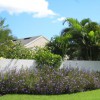 Environmental tolerance, abundant seed production, and an ability to easily grow from plant stem sections have allowed Mexican petunia to spread into natural areas that border urban areas. The Florida Exotic Pest Plant Council lists Mexican petunia (wild-type and non-sterile cultivars) as a Category 1 invasive species, meaning that it is “altering native plant communities by displacing native species, changing community structures or ecological functions, or hybridizing with natives”. These potential changes to community structure and ecological function are of particular concern in Florida wetlands, where changes to plant communities have the potential to impact not just plant-animal interactions, but also overall hydrology on a whole watershed level. This 6-page fact sheet was written by C. A. Reinhardt Adams, C. Wiese, L.C. Lee, S.B. Wilson, A. M. Smith, and R. Freyre, and published by the UF Department of Environmental Horticulture, April 2014.
Environmental tolerance, abundant seed production, and an ability to easily grow from plant stem sections have allowed Mexican petunia to spread into natural areas that border urban areas. The Florida Exotic Pest Plant Council lists Mexican petunia (wild-type and non-sterile cultivars) as a Category 1 invasive species, meaning that it is “altering native plant communities by displacing native species, changing community structures or ecological functions, or hybridizing with natives”. These potential changes to community structure and ecological function are of particular concern in Florida wetlands, where changes to plant communities have the potential to impact not just plant-animal interactions, but also overall hydrology on a whole watershed level. This 6-page fact sheet was written by C. A. Reinhardt Adams, C. Wiese, L.C. Lee, S.B. Wilson, A. M. Smith, and R. Freyre, and published by the UF Department of Environmental Horticulture, April 2014.
http://edis.ifas.ufl.edu/ep498
Using Social Norms to Increase Behavior Change in Sustainable Landscaping
 When Extension agents work to encourage behavioral changes in their community through educational programming, they may already be using some elements of social marketing. Extension educators can use an understanding of their clients’ reservations and inclinations toward a behavior, or their benefits and barriers, to develop strategies that encourage behavior change. Common strategies include prompts and reminders, incentives, and changing social norms. These strategies may be piloted on a small scale, modified if necessary, and then implemented on a large scale and further evaluated. This publication’s purpose is to describe the use of social norms as a social marketing strategy and make recommendations for applying social norms as a tool in Extension programming. This 5-page fact sheet was written by Laura Sanagorski and Paul Monaghan , and published by the UF Department of Agricultural Education and Communication, February 2014.
When Extension agents work to encourage behavioral changes in their community through educational programming, they may already be using some elements of social marketing. Extension educators can use an understanding of their clients’ reservations and inclinations toward a behavior, or their benefits and barriers, to develop strategies that encourage behavior change. Common strategies include prompts and reminders, incentives, and changing social norms. These strategies may be piloted on a small scale, modified if necessary, and then implemented on a large scale and further evaluated. This publication’s purpose is to describe the use of social norms as a social marketing strategy and make recommendations for applying social norms as a tool in Extension programming. This 5-page fact sheet was written by Laura Sanagorski and Paul Monaghan , and published by the UF Department of Agricultural Education and Communication, February 2014.
http://edis.ifas.ufl.edu/wc158
Livistona chinensis: Chinese Fan Palm
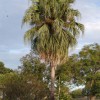 The Chinese fan palm is relatively slow growing, typically reaching about 30 feet in height. Its fan-shaped, costapalmate leaves can be 3 to 4 feet across and up to 6 feet long. Petioles of juvenile palms are spiny, but have few or no spines in adult palms. Because of its gracefully drooping leaf segment tips, this species is sometimes called the “fountain palm”. Young specimens are slow to form a trunk, which has led to the unfortunate practice of planting these palms close together as a ground cover. Eventually, most of those closely planted palms will have to be removed to accommodate their 10 to 12 foot spread. This 5-page fact sheet was written by Timothy K. Broschat, and published by the UF Department of Environmental Horticulture, April 2014.
The Chinese fan palm is relatively slow growing, typically reaching about 30 feet in height. Its fan-shaped, costapalmate leaves can be 3 to 4 feet across and up to 6 feet long. Petioles of juvenile palms are spiny, but have few or no spines in adult palms. Because of its gracefully drooping leaf segment tips, this species is sometimes called the “fountain palm”. Young specimens are slow to form a trunk, which has led to the unfortunate practice of planting these palms close together as a ground cover. Eventually, most of those closely planted palms will have to be removed to accommodate their 10 to 12 foot spread. This 5-page fact sheet was written by Timothy K. Broschat, and published by the UF Department of Environmental Horticulture, April 2014.
http://edis.ifas.ufl.edu/st365
Roystonea regia: Royal Palm
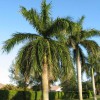 The royal palm is a large majestic palm that is native to south Florida and Cuba. It is considered cold hardy to about 28°F or USDA Cold Hardiness Zone 10A. This species quickly grows to heights of 50–70 ft., with a spread of 20–25 ft., and has a smooth light gray trunk up to 2 ft. in diameter. It is ideal for landscaping streets, parks, and commercial properties, but becomes too large for typical residential landscapes. This 4-page fact sheet was written by T.K. Broschat, and published by the UF Department of Environmental Horticulture, February 2014.
The royal palm is a large majestic palm that is native to south Florida and Cuba. It is considered cold hardy to about 28°F or USDA Cold Hardiness Zone 10A. This species quickly grows to heights of 50–70 ft., with a spread of 20–25 ft., and has a smooth light gray trunk up to 2 ft. in diameter. It is ideal for landscaping streets, parks, and commercial properties, but becomes too large for typical residential landscapes. This 4-page fact sheet was written by T.K. Broschat, and published by the UF Department of Environmental Horticulture, February 2014.
http://edis.ifas.ufl.edu/st574
Old World Diamond-Flower Biology and Management in Turf
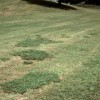 Old world diamond-flower is a smooth, spreading summer annual. It has branched stems with opposite, narrow leaves. Flowers are white, usually with two or more on long stalks extending from the tip of a common long stalk. Flowers occur from midsummer until frost. Reproduction occurs by seed. Found in moist areas, especially areas that have been disturbed. This 2-page fact sheet was written by Darcy E. P. Telenko, Barry J. Brecke, Ramon Leon, and J. Bryan Unruh, and published by the UF Department of Environmental Horticulture, December 2013.
Old world diamond-flower is a smooth, spreading summer annual. It has branched stems with opposite, narrow leaves. Flowers are white, usually with two or more on long stalks extending from the tip of a common long stalk. Flowers occur from midsummer until frost. Reproduction occurs by seed. Found in moist areas, especially areas that have been disturbed. This 2-page fact sheet was written by Darcy E. P. Telenko, Barry J. Brecke, Ramon Leon, and J. Bryan Unruh, and published by the UF Department of Environmental Horticulture, December 2013.
http://edis.ifas.ufl.edu/ep493
Plumeria: Propagation from Cuttings
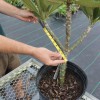 Plumeria are flowering ornamentals native to the Caribbean, Mexico, Central America, Venezuela, and Colombia. Highly valued for their colorful flowers, plumeria are now grown in tropical and subtropical areas throughout the world. Plumeria, or frangipani, are members of the Apocynaceae family. Unless steps are taken to prevent frost damage, plumeria are generally limited to landscape uses in south Florida and protected regions of central Florida. This 5-page fact sheet was written by Andrew K. Koeser, Gitta Hasing, and Drew McLean, and published by the UF Department of Environmental Horticulture, October 2013.
Plumeria are flowering ornamentals native to the Caribbean, Mexico, Central America, Venezuela, and Colombia. Highly valued for their colorful flowers, plumeria are now grown in tropical and subtropical areas throughout the world. Plumeria, or frangipani, are members of the Apocynaceae family. Unless steps are taken to prevent frost damage, plumeria are generally limited to landscape uses in south Florida and protected regions of central Florida. This 5-page fact sheet was written by Andrew K. Koeser, Gitta Hasing, and Drew McLean, and published by the UF Department of Environmental Horticulture, October 2013.
http://edis.ifas.ufl.edu/ep489
Native Plants That Benefit Native Wildlife in the Florida Panhandle
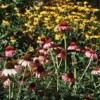 The key to enhancing wildlife (and attracting it to your property) is to provide the resources wildlife need. This means supplying food, water, and cover within the space you own and manage. Because the needs of each wildlife species for food and cover vary from one season to the next, a mix of plant species is required to meet the needs of a species all year round. And because each species has different needs, attracting and maintaining a wide variety of wildlife year round requires a wide diversity of plants. A property owner interested in attracting wildlife should nurture a wide variety of native plants to ensure that there is a large assortment of food and cover options available all the time. This 8-page fact sheet was written by Holly K. Ober and Gary W. Knox, and published by the UF Department of Wildlife Ecology and Conservation, October 2013.
The key to enhancing wildlife (and attracting it to your property) is to provide the resources wildlife need. This means supplying food, water, and cover within the space you own and manage. Because the needs of each wildlife species for food and cover vary from one season to the next, a mix of plant species is required to meet the needs of a species all year round. And because each species has different needs, attracting and maintaining a wide variety of wildlife year round requires a wide diversity of plants. A property owner interested in attracting wildlife should nurture a wide variety of native plants to ensure that there is a large assortment of food and cover options available all the time. This 8-page fact sheet was written by Holly K. Ober and Gary W. Knox, and published by the UF Department of Wildlife Ecology and Conservation, October 2013.
http://edis.ifas.ufl.edu/uw384
Nematode Management for Bedding Plants
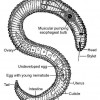 Florida is the “land of flowers.” Surely, one of the things that Florida is known for is the beauty of its vegetation. Due to the tropical and subtropical environment, color can abound in Florida landscapes year-round. Unfortunately, plants are not the only organisms that enjoy the mild climate. Due to warm temperatures, sandy soil, and humidity, Florida has more than its fair share of pests and pathogens that attack bedding plants. Plant-parasitic nematodes can be among the most damaging and hard-to-control of these organisms. This 11-page fact sheet was written by William T. Crow, and published by the UF Department of Entomology and Nematology, February 2014.
Florida is the “land of flowers.” Surely, one of the things that Florida is known for is the beauty of its vegetation. Due to the tropical and subtropical environment, color can abound in Florida landscapes year-round. Unfortunately, plants are not the only organisms that enjoy the mild climate. Due to warm temperatures, sandy soil, and humidity, Florida has more than its fair share of pests and pathogens that attack bedding plants. Plant-parasitic nematodes can be among the most damaging and hard-to-control of these organisms. This 11-page fact sheet was written by William T. Crow, and published by the UF Department of Entomology and Nematology, February 2014.
http://edis.ifas.ufl.edu/in470